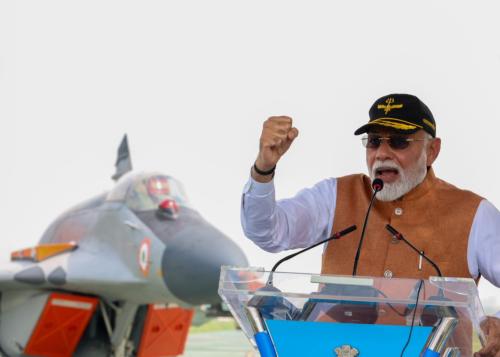Al-Shabab has seen better days. The Somali group that perpetrated the horrific attack on the Westgate shopping mall in Kenya that killed over 60 people controlled much of Somalia, including the capital, in 2009. Forces from the African Union and neighboring states like Kenya — backed by the United States and working with rival Somali factions — chased al-Shabab out of Mogadishu and many other parts of the country, while splits and defections further weakened the group. Then, in 2012, after years of flirtation, al Qaeda formally embraced al-Shabab. Setbacks for an al Qaeda ally is good news for U.S. friends, but one of the ironies of American counterterrorism is that helping our allies win changes the nature of the threat.
Acknowledging these shifting sands, President Barack Obama observed this May that “the threat has shifted and evolved from the one that came to our shores on 9/11,” but warned that al Qaeda affiliates are emerging, from “Yemen to Iraq, from Somalia to North Africa.” Counterterrorism accordingly has shifted, with attention focused less on the al Qaeda core and more on affiliates and potential allies, which are present in Afghanistan, Algeria, Iraq, Mali, Nigeria, Pakistan, Syria, and Yemen, among other countries. Many of these groups are locked in life and death struggles against local governments, which is why Washington is arming, training, and providing allied regimes support. But al-Shabab’s experience suggests that we must prepare for “success” — because locally focused groups respond to failure in dangerous ways.
Some terrorists keep fighting while their comrades fall one by one: Basque Fatherland and Liberty, better known by its acronym, ETA, took years to embrace a ceasefire despite the killing or arrest of many of its senior members. Other terrorists simply drop out and at times even reject violence: Leaders of Egypt’s Gamaat al-Islamiyya, which was responsible for attacks in Egypt that led to almost 1,000 deaths in the 1990s, declared a ceasefire from jail in 2003 and later issued a stunning self-critique that rejected violence. After President Hosni Mubarak fell, Gamaat al-Islamiyya even formed a political party.
The Brookings Institution is committed to quality, independence, and impact.
We are supported by a diverse array of funders. In line with our values and policies, each Brookings publication represents the sole views of its author(s).



Commentary
Op-edThe Dangers of Success: Why It’s Not So Simple to Crush and Kill al Qaeda Affiliates
September 27, 2013